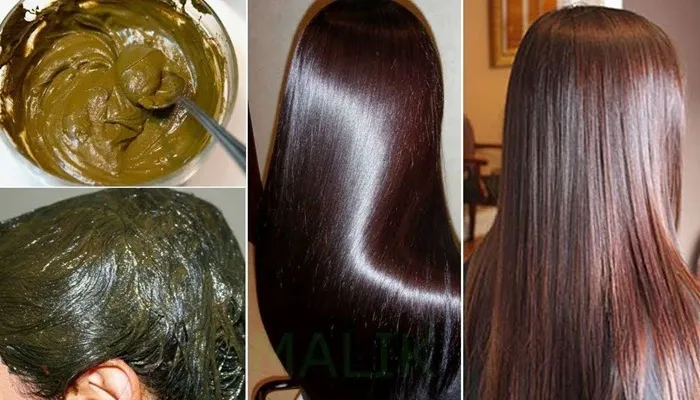Hair coloring is one of the oldest beauty practices, with roots tracing back thousands of years across diverse cultures worldwide. While synthetic hair dyes dominate the modern market, growing awareness of chemical sensitivities and environmental concerns have led many to seek natural alternatives. Among these, 100% natural henna hair dye stands out as a trusted, time-tested solution that combines aesthetic appeal with therapeutic benefits.
This article offers an exhaustive exploration of 100% natural henna hair dye, covering its botanical origins, chemical composition, methods of application, color results, health and environmental impacts, and best practices for use.
Botanical Origin and Historical Context
Henna dye is derived from the dried leaves of the Lawsonia inermis shrub, a flowering plant native to arid and semi-arid regions spanning North Africa, the Middle East, and South Asia. The leaves contain the active dye molecule lawsone (2-hydroxy-1,4-naphthoquinone), which imparts the characteristic reddish-orange color upon binding with keratin.
Historically, henna has been used for millennia for body art, hair coloring, and conditioning. Archaeological evidence reveals henna use in Ancient Egypt, where it was prized not only for beautification but also for its antiseptic properties. In the Indian subcontinent, henna holds cultural and religious significance, often applied during weddings and festivals.
Chemical Composition of Natural Henna
The principal coloring agent in henna is lawsone, a molecule with a high affinity for keratin, the fibrous protein constituting hair, nails, and the outer skin layer. Lawsone forms a strong covalent bond with hair keratin, producing a durable reddish-orange stain.
In addition to lawsone, henna leaves contain tannins, mucilage, essential oils, and flavonoids. Tannins contribute astringent properties and aid in dye binding; mucilage moisturizes and improves paste consistency; essential oils and flavonoids provide fragrance and antioxidant activity.
When henna paste is applied, lawsone penetrates the hair cuticle and binds to cysteine amino acids in keratin, resulting in a semi-permanent natural stain.
Classification of Henna Hair Dyes
Henna hair dyes are classified broadly into:
100% Natural Henna: Pure Lawsonia inermis leaf powder without additives or synthetic chemicals.
Black Henna: Often adulterated with para-phenylenediamine (PPD) or other chemicals to create black color but associated with allergic reactions and health risks.
Herbal Henna Blends: Combinations of henna with other botanicals such as indigo or amla to create brown or black shades.
Using authentic 100% natural henna ensures safety, minimizes allergy risk, and retains the natural conditioning benefits.
Application of 100% Natural Henna Hair Dye
Preparing henna involves selecting high-quality, finely sifted powder mixed with acidic liquids (like lemon juice or tea) to release lawsone. The mixture is rested for 6-12 hours to activate the dye.
Application requires sectioning hair and applying paste evenly from roots to ends, followed by covering with plastic wrap to maintain moisture and warmth. Typical processing times range from 1 to 4 hours, depending on desired color intensity.
Post-application care includes rinsing thoroughly with water and avoiding shampooing for 24-48 hours to allow oxidation and color development. Conditioning is advised as henna can feel drying initially.
Color Results and Longevity
Natural henna imparts vibrant copper to deep auburn shades depending on hair type, henna quality, and application time. The color typically lasts 4-6 weeks and fades gradually but does not wash out completely.
Benefits of Using 100% Natural Henna
Henna is chemical-free and generally safe, with minimal allergy risk when pure. It acts as a natural conditioner by coating the hair shaft, enhancing texture, reducing breakage, and adding shine. Its antimicrobial properties promote scalp health by reducing dandruff and irritation. Environmentally, henna is biodegradable and supports sustainable agriculture.
Limitations and Considerations
Henna cannot produce blonde or very light shades and is limited to reddish hues unless blended with other natural dyes. The application process is time-consuming and messy, with potential for staining skin and clothing. Henna’s strong bond with hair keratin may complicate subsequent chemical treatments, risking uneven color or damage.
Scientific Research and Safety Data
Studies confirm that lawsone binds effectively to keratin, producing durable coloration. Henna also contains antioxidants that protect hair from oxidative stress and its antimicrobial properties help scalp health. The safety profile of pure henna is excellent; however, products containing synthetic additives like PPD pose serious allergy risks.
Tips for Best Results with 100% Natural Henna
- Use fresh, finely sifted henna powder from trusted suppliers.
- Perform a patch test before full application to check for allergies.
- Mix with acidic liquids to optimize dye release.
- Apply on clean, dry hair for even coverage.
- Leave on for 2-4 hours for richer color.
- Avoid shampooing immediately after rinsing to allow full color development.
- Combine with other natural dyes like indigo for expanded color options.
Conclusion
100% natural henna hair dye is a natural, effective, and sustainable alternative to synthetic hair dyes. It offers beautiful, lasting color while conditioning and protecting hair. Though application requires patience and the color range is limited, henna remains a valued choice for those seeking chemical-free hair coloring with added hair and scalp benefits. Understanding its chemistry and best practices ensures optimal results and safe use.
Related Topics:

